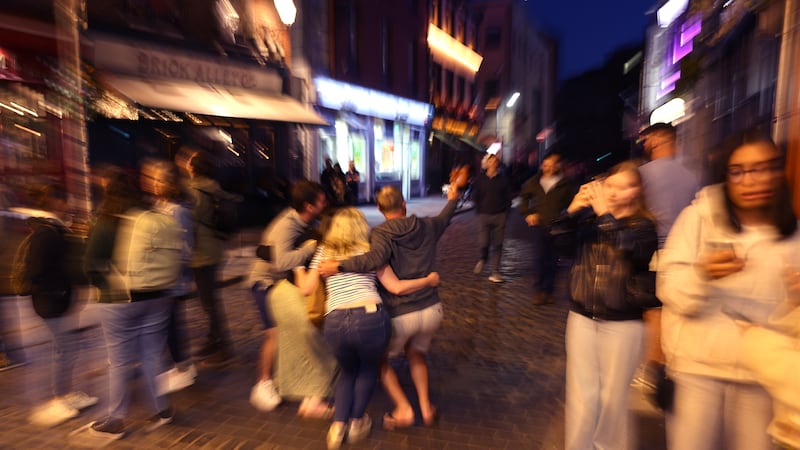The current round of managerial appointments indicate two related trends: there is a shortage of suitable candidates and – probably because of this – few plausible applicants are interested in taking up these positions.
Half of the Division One football counties are still without a manager and, of these, only the Mayo vacancy has created a scuffle of interest. It’s not that there’s anything wrong with taking time to arrive at a correct decision but, in some counties, the appointment was able to be made quickly.
In others, the delay is more about levels of interest than a strict desire to do things properly. Hardly surprising when you factor in everything involved in the preparation of intercounty teams at the highest level, including the recruitment of substantial back-room teams and the attendant cost, as well as the pressure to succeed if not by actually winning something then by tangibly improving the team’s standing.
It’s 10 years since former DG Páraic Duffy launched his discussion document on the payment of county managers. One of his proposed options (3) was to permit it and regularise what was known to be happening in several cases – the others were to do nothing (1) or to crack down hard on breaches of the amateurism rules (2).
READ MORE
Inevitably, when consulted delegates voted to implement (2) but ultimately continued to do (1).
Throughout its history, the GAA has incrementally professionalised more and more of its activities, as circumstances have demanded. The employment of development officers, promotion officers and administrators is evidence that the reach of the associations’ volunteerism isn’t sufficient for its needs in the modern world.
Bearing that in mind, should managers be officially paid? There’s no doubting the pressures on them and running a county team is almost like being CEO of a small business but such a departure would be fraught with anomalies. For one, there wouldn’t be parity of earnings for all involved, as the more successful would receive more.
Of more fundamental concern to the association is the pressure not on high-profile intercounty participants but on volunteers, who collectively play a vital role on the ground at both club and county level.
Tom Ryan, the current DG, flagged this fairly vigorously in this year’s annual report, devoting a whole section to ‘Volunteer burden’. In a follow-up to that, as reported last weekend in the Irish Examiner, a report was presented to Central Council last April, analysing the HR flaws in a system of full-time employees and voluntary overseers.
Predictably it flagged the full extent of that problem.
Ryan’s concerns were twofold. Firstly, the burden on voluntary members which far exceeded the demands of a recreational interest and secondly, its influence in inhibiting new members from getting involved – in other words, the sustainability.
This isn’t new, either. Ten years ago, his predecessor Duffy, made the following point at a time when the impact of recession was still becalming the economy.
“Occupying an officer role at club or county level makes huge demands on the volunteers, and the current financial pressures on both individuals and units have accentuated the burdens.”
There was also reference to an unnamed county chair, who had at the end of 2011 pointed out a reality that would become more and more pressing. It’s also a conundrum that the greater the GAA’s full-time staff grows, the more work – not less – this typically involves for ordinary members.
“We are in an environment now where there are a lot of employed people throughout the association and I feel this is beginning to cause difficulties with some of our volunteers … my understanding is that the paid personnel are there to take the workload off the volunteer and improve levels of performance but in reality what is happening with the current structures in place, the volunteer is now being overloaded . . . year on year the workload that is cascading down from on high is increasing and is almost getting to a stage where it is literally getting unhealthy.”
Take a look at the Official Guide. Twenty five years ago, it made no reference to sub-committees of the county board. By 2006, a section on functions of county subcommittees listed 11 – some of them obvious, like, management and games administration and coaching committees.
In this year’s rule book, it is up to 16 and it’s not as if you can round up the usual suspects, such as they continue to exist. Rule 3.20 (xv) lists the audit and risk committee – a necessary piece of governance but requiring very specific expertise.
It was widely noted during the depths of the pandemic that a club’s Covid officer had a huge amount of administration between the safeguarding of activities and the constant need for documentation declaring that players were not infected.
That might be exceptional but the modern and necessary stipulations on Garda vetting and child protection have become hugely important but equally add to the burden on volunteers.
How does the GAA deal with this? Given how eye-opening Dr Elish Kelly’s ESRI report on intercounty players proved to be, four years ago, is it time to commission similar studies on intercounty managers and volunteers?
It may be argued that the costs involved – the 2018 report is believed to have edged up to a six-digit sum – make it a luxury investment even if it is believed the proposed follow-up would be less costly depending on how detailed it would be.
But Tom Ryan is right. These are existential issues for the GAA and it would be best to get the clearest picture of the current reality so that swift and considered solutions might be implemented.

















